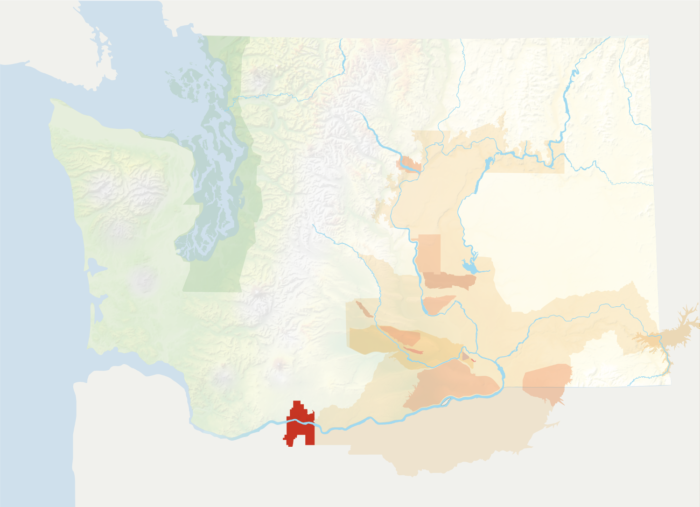Location: South-central Washington & north central Oregon
Designated: 2004
Total Size: 191,000 acres
Acreage Under Vine: Total vineyard acreage: 950 (384 Hectares); Washington acreage: 381 (154 Hectares)
Top Varieties: Chardonnay, Pinot Noir
Soils: Silt loam
Average Annual Precipitation: 10-36 inches
Two Things to Know:
- The western-most appellation in eastern Washington.
- It is known for its diversity of climate, aspects, and soil types.
The Columbia Gorge is named after a 40-mile area where the Columbia River cuts through basalt bedrock, creating a gorge with a series of ridges and cliffs. It is one Washington’s only growing regions that lies outside of the Columbia Valley appellation, which it abuts.
The Columbia Gorge is notable for its diversity, with hot, dry regions to the east as well as cooler areas to the west that receive so much rain vineyards are able to be dry farmed – an extreme rarity in eastern Washington.
This region’s proximity to the Cascade crest, which lies to the west, results in radically different microclimates. Driving west to east, annual rainfall decreases approximately one inch per mile. The western section of the appellation receives an average of 36 inches of rainfall annually, the eastern section a mere 10 inches.
As a result, western vineyards have more of a maritime influenced climate, ideal for cooler climate grapes; eastern vineyards have a continental climate, better suited to warm weather varieties.

Climatically, the Columbia Gorge is also notable for its near-constant winds due to pressure differentials caused by cool air from the Pacific Ocean meeting warm air from eastern Washington’s deserts. Most vineyards on the Washington side of the appellation are planted on south-facing slopes in order to receive as much sunshine as possible.

The range of elevations and precipitation lead to varied soil types. Some plantings in the area are on an extinct volcano.
This is one of three AVAs that cross into Oregon, also known as cross-border AVAs.

